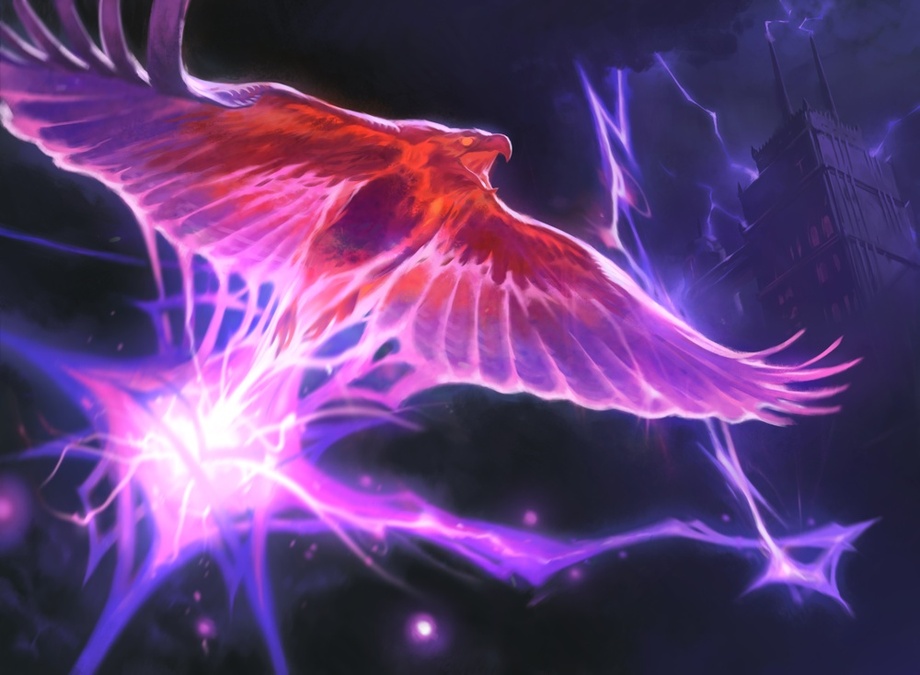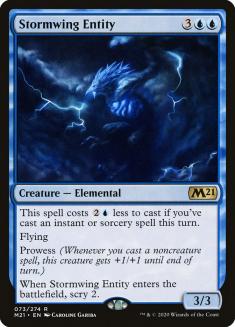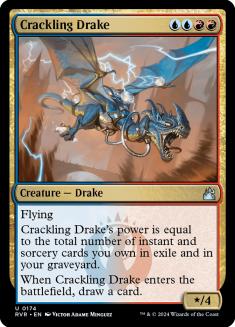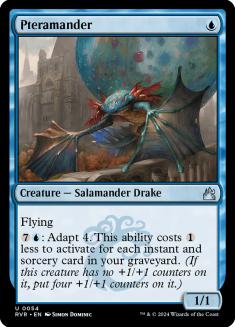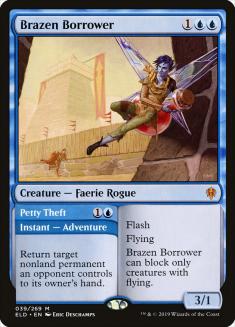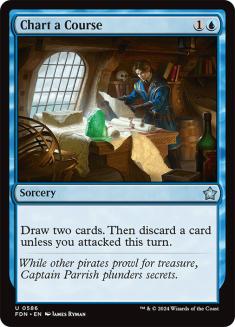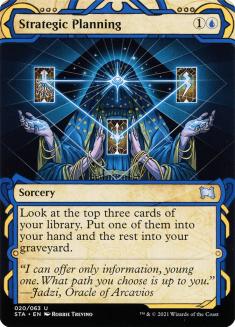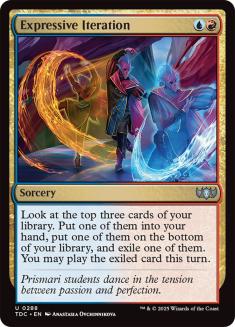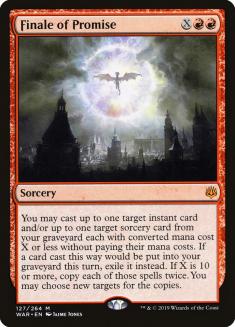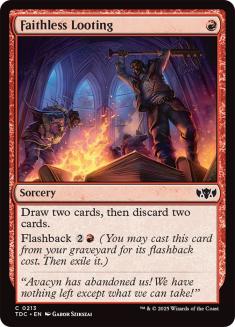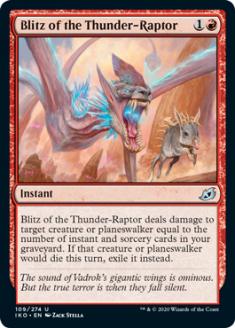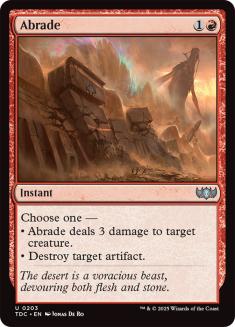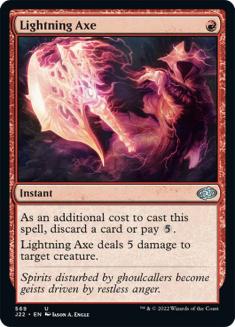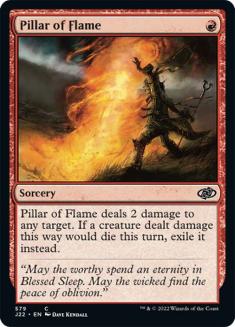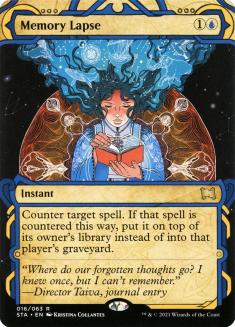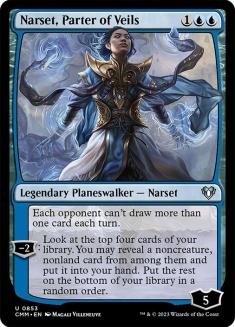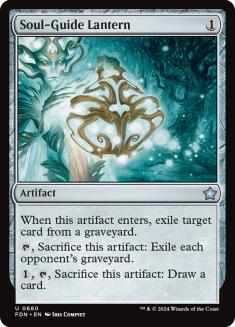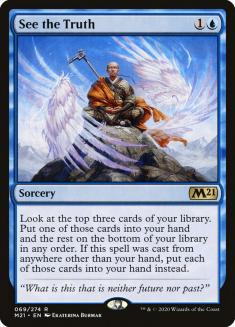There are occasionally decks in Magic whose strength is difficult to gauge. Typically, those happen to be blue aggressive decks and Izzet Phoenix is no different. In fact, during its tenure in Modern, Izzet Phoenix was either the best deck by a mile or unplayable, depending on who you asked. Unsurprisingly, that’s carried over into Historic.
One of the main issues is that Izzet Phoenix needs to be proactive. You need to cast three spells on your turn, which means you’re usually operating at sorcery speed. Even if you wanted to play counterspells or some other form of disruption, it would mean your Phoenixes will be coming back less often. Having very little interaction means you can’t do anything about the various scary cards in the format, leaving players very unhappy with Phoenix.
In reality, Izzet Phoenix can be a poor deck in Game 1 but can make up a ton of ground in the post-sideboard games. Its Game 1 plan tends to be racing, which doesn’t always work out. However, if you do manage to steal Game 1 in those awkward matchups, Izzet is a favorite in the match.
There are also matchups where Izzet’s burn spells actually do work as interaction, which means you have a much stronger shot of winning Game 1. Recently, we’ve seen a surge of creature decks in Historic, which leaves Izzet Phoenix prime for a takeover.
Creatures (10)
Lands (22)
Spells (28)

You can break down any Izzet Phoenix build into their suites of card drawing, interaction, and threats. To a lesser extent, you can include the manabase and sideboard, but those three define what sort of Phoenix deck you’re trying to be.
The Threats
Most Izzet decklists start with four Stormwing Entity and it’s the weakest part of most decklists. Entity is a powerful card, but Entity and Phoenix both occupy Turn 3, which creates too much tension. You’d much rather cast a Sprite Dragon or Young Pyromancer on Turn 2 and try to bring back your Phoenixes on Turn 3.
Casting a two-drop and setting up for a big Turn 3 allows you to get more usage out of your two-drops. Those who try Stormwing Entity alongside those two-drops likely end up feeling like the two-drops aren’t doing much because they aren’t being triggered until Turn 4. In reality, Stormwing Entity is the problem and the two-drops are solid. Sprite Dragon and Young Pyromancer die to everything and Stormwing Entity doesn’t. However, “dies to removal” doesn’t matter when most Historic games come down to efficiency.
Entity also has issues with being awkward in multiples and requiring you to hold onto cantrips in case you draw a copy later. It being expensive means that it’s also competing with Finale of Promise, Crackling Drake, or whatever other big card you’re playing.
There is some merit to having a consistently powerful Turn 3, especially since there will be games where you don’t find a Phoenix in the top twenty cards of your deck. Even in those cases, we have Finale of Promise to fall back on.
Crackling Drake is a powerful card, especially if matchups come down to attrition. Sadly, that’s not the case at the moment, plus it has many of the same issues as Entity. Being able to cast a threat and hold open Memory Lapse often matters in those attrition matchups, so you’d prefer your threats be cheap and make up the card advantage elsewhere.
Lately, I’ve been pondering playing Young Pyromancer over Sprite Dragon. In theory, it could be stronger against the green creature decks. If you play either and get a single trigger before dying, Young Pyromancer is much better. That said, flying, sizing, and haste all matter, which is why I’m not playing Young Pyromancer quite yet.
The backup to my flying army is Pteramander, which historically has had issues being evaluated properly. As a four-of, it’s not great because you can’t grow it early. At that point, why not only play a couple of copies? Late-game, it will be a stronger threat than Sprite Dragon, albeit potentially weaker than Entity. However, you can weave it into your turn rather seamlessly, which is what I like. It does open you up to Rest in Peace, which isn’t ideal. If you want to dodge that completely, there are under threats you can play.
Brazen Borrower has been in and out of my deck, albeit in small numbers. Having a threat that doubles as a spell can be nice. It can also get rid of a Narset or bigger creature for a turn, which are two of Phoenix’s main issues. Bouncing Grafdigger’s Cage, Rest in Peace, and the like has come up as well. Unfortunately, it usually ends up feeling too clunky.
Am I light on threats? Yes, but only if you’re comparing my version to everyone else’s. In general, I don’t think so, thanks to Finale of Promise.
The Card Drawing
Brainstorm, Faithless Looting, and Opt are all obvious. What two-mana options do you play, if any?
Originally, I was drawn to Chart a Course because it has that smooth hand-sculpting feeling that Brainstorm provides. Since we have Looting and Brainstorm, we can get rid of Chart a Course and search for something better. Strategic Planning was a card I glossed over as not being very good since it was worse than Chart a Course the vast majority of the time. In combination with Brainstorm, Planning becomes excellent and I wish I was playing it sooner.
Expressive Iteration is a new card that many players are using now. I’m a fan of the card but not in this archetype. In longer games, having the potential two-for-one is great, but you want your two mana card to set up your Turn 3 Arclight Phoenixes. Get your card advantage from somewhere else.
See the Truth can be excellent alongside Finale of Promise if you’re playing against attrition-based matchups. Unfortunately, even the control decks have powerful closing tools with Torrential Gearhulk and Magma Opus. Those matchups don’t typically revolve strictly around card advantage. Post-sideboard, when you have more ways to disrupt each other, it matters more. However, it is a low-opportunity-cost way to give your deck a power spike in the mid-game.
I like one copy. There have been situations against aggressive decks where you remove their first few threats and then want to rebuild from a Finale of Promise. See the Truth isn’t entirely necessary in those situations, although it turns a close game into a foregone conclusion. Treat it like another card you are happy to discard to Lightning Axe or Faithless Looting and you’ll be happier with its inclusion.
Finale of Promise is so powerful that it’s uncuttable in my mind. It can return Phoenix on its own, creates multiple triggers for Sprite Dragon, allows you to go long against control decks, and can be a two-for-one against aggro decks. It’s the glue that holds the deck together. If Finale of Promise hasn’t been good enough for you to want three copies, it’s probably because your deck wasn’t lean enough.
Does Finale of Promise compete with Pteramander? To some degree, yes. With Strategic Planning and all the cantrips, it isn’t difficult to do both, especially since Finale of Promise is usually targeting a cantrip or two, which will find replacements to fill your graveyard.
Ox of Agonas is something I’d love to play. It has most of the same downsides as Finale of Promise except that you can discard it for value. My main issue with it is that it’s very bad against Narset, which Finale of Promise can actually be good against.
Some players have experimented with splashing Abundant Harvest but it’s not worth it. The mana isn’t free and you have enough one-mana options already. Harvest is mostly better than Opt, so you would get a small upgrade. If green offered something you needed, I’d consider it. Izzet has all the tools you need.
The Removal Suite
When Phoenix mirrors were huge, playing more Pillar of Flames made sense. Having a sorcery-speed removal spell mattered for Finale for Promise too. There are still some Phoenixes (and Cauldron Familiars) out there but maxing on Pillar of Flame isn’t ideal if you can avoid it. Shock’s versatility can be huge, especially against Llanowar Elves on the play or Luminarch Aspirant on the draw. In either case, Pillar of Flame could severely hamper your mana development.
Lightning Axe is a necessity for larger creatures and to have more discard outlets for Arclight Phoenix. Blitz of the Thunder-Raptor was so good out of the sideboard that I started playing it maindeck. It kills big creatures and Narset, Parter of Veils, which are two of Phoenix’s biggest issues. Playing these big instants does make me a little wary of my Finale of Promise options, so going back to four Pillars might make sense.
There are some metagames where I could sideboarding Sweltering Suns but this isn’t one of them. We have a plethora of one-mana removal and most decks have something that doesn’t die to Suns, so it can be awkward at times. You can kill everything with spot removal, blocking, card advantage.
The Sideboard
Oddly, my sideboard is rather simplistic. As the metagame solidified, it became easier to pinpoint exactly which cards could help Izzet Phoenix in any given matchup. Thankfully, many of those cards, such as Blitz of the Thunder-Raptor, overlap.
Against any deck where you want a counterspell, Memory Lapse is sufficient. Gone are the days where you have to juggle how many copies of Negate, Disdainful Stroke, or Spell Pierce you play. Some Mystical Disputes make the cut because of Torrential Gearhulk, Dimir Rogues, and Tainted Pact, but that’s mostly because I want more counterspells, not that I have issues with diversification.
If you were truly scared of Tainted Pact or Torrential Gearhulk decks, you could play a couple copies of Memory Lapse maindeck. Going that route isn’t ideal in a vacuum but you do what you gotta do. Cutting a Shock and a See the Truth wouldn’t be the end of the world.
Abrade can handle most of the graveyard hate out there and assist Blitz and Lightning in killing larger creatures. The last card in the sideboard is Soul-Guide Lantern, which isn’t entirely necessary. Having an easy way to disrupt Phoenix mirrors and Torrential Gearhulk is nice, but not necessary. It mostly helps cover you against the random stuff in Historic.
The Matchup Guide
VS Selesnya Company
Out:
In:
In most instances, I’ll shave a Sprite Dragon and Faithless Looting when I become more controlling. Against Selesnya Company, having the flyer can be valuable, plus it can eventually grow large enough to block Lovestruck Beast and Kazandu Mammoth. Regardless, you aren’t typically interested in drawing multiple copies.
Against Gruul Aggro, I’ll sideboard the same way, except I’d rather have the fourth Faithless Looting than a Strategic Planning. Blocking with Arclight Phoenix is more important against them. Plus, you’d rather find specific answers to their threats because of how fast their clock is.
VS Tainted Pact Combo
Out:
In:
This matchup is scary but it’s also scary for everyone. There probably shouldn’t be any Turn 4 combos in Historic but here we are. Pressure and disruption are the most important aspects, although occasionally the games might go long.
VS Jeskai Control
Out:
In:
Wow, that’s a huge sideboard plan! It is, but don’t be worried. Jeskai Control isn’t that scary of a matchup, especially after sideboarding. They should have multiple copies of Rest in Peace now, which isn’t as devastating as you’d think, since it shuts down their best cards as well. The worst part about it is shutting down Blitz, so I could see trading one copy for a Fry. Narset is their best card against you, and if you can keep her off the battlefield, you should be able to win.
VS Orzhov Auras
Out:
In:
Despite having a ton of Shocks, this matchup is scary. Once they get the ball rolling, there’s not much you can do to stop them. Mulligan aggressively for a removal spell and hope you can chain them together before they’re able to stick a threat.
VS Dimir Rogues (Lurrus)
Out:
In:
Dimir Rogues doesn’t have much graveyard hate and they’re fairly weak to Arclight Phoenix in general. The games you lose are when they’re able to stabilize and start gaining card advantage. Keep the pressure up, match their card advantage, and stop them from gaining any traction with their creatures.
A plan I haven’t been able to try is keeping most of the removal and trying to ride Narset to victory. For the most part, their graveyard removal is light and Arclight Phoenix will usually beat them, so I haven’t needed to try it. Against any Brainstorm deck, especially one without much pressure, it can be tempting to automatically bring in Narset.
VS Jund Food
Out:
In:
I’m assuming they are the bigger Korvold version. Against the smaller Collected Company versions, you can sideboard similarly to Gruul.
If they’re able to get all the pieces of their engine, it becomes trivial for them to kill everything you play. Keep their creatures off the battlefield and hope you can race card advantage from Trail of Crumbs.
VS Izzet Phoenix
Out:
In:
Both players will likely have access to Pillar of Flame, so Arclight Phoenix itself won’t be a huge issue unless multiple copies are found early. That means the game will devolve into who can stick a big threat. If you can’t immediately remove it, they’ll likely run away with the game.
You can -2 Narset if you want since most of their burn is going to be two damage. They could have Fry or Blitz of the Thunder-Raptor, in which case you’d prefer to get the extra card. Just be careful that it won’t die to a Sprite Dragon or Arclight Phoenix.
As always, Izzet Phoenix is highly customisable. Narset, Parter of Veils and green creatures are the biggest threats to the deck, which this deck answers with Blitz of the Thunder-Raptor. Having a clean answer to control and combo in the form of Memory Lapse is also a massive boon. Tune your deck correctly each week and Izzet Phoenix will have a good chance of beating anyone.

